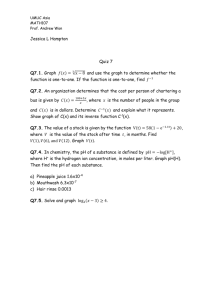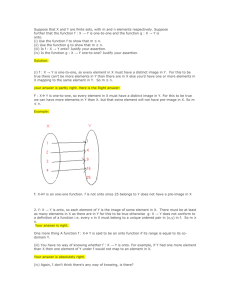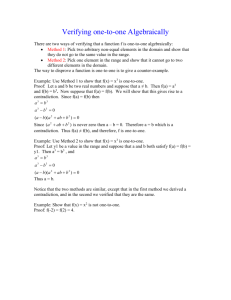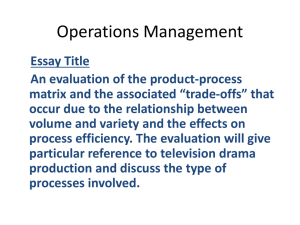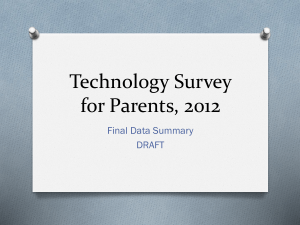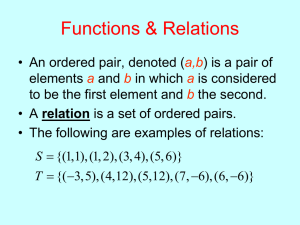Brian Williamson EJOLTS feedback
advertisement
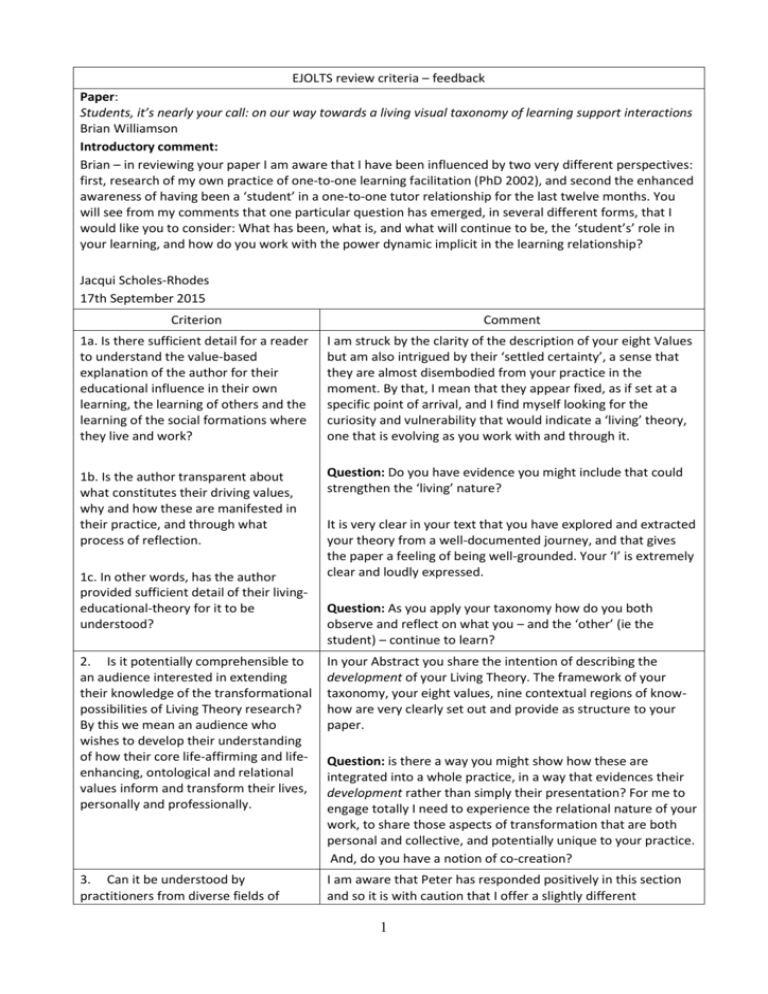
EJOLTS review criteria – feedback Paper: Students, it’s nearly your call: on our way towards a living visual taxonomy of learning support interactions Brian Williamson Introductory comment: Brian – in reviewing your paper I am aware that I have been influenced by two very different perspectives: first, research of my own practice of one-to-one learning facilitation (PhD 2002), and second the enhanced awareness of having been a ‘student’ in a one-to-one tutor relationship for the last twelve months. You will see from my comments that one particular question has emerged, in several different forms, that I would like you to consider: What has been, what is, and what will continue to be, the ‘student’s’ role in your learning, and how do you work with the power dynamic implicit in the learning relationship? Jacqui Scholes-Rhodes 17th September 2015 Criterion Comment 1a. Is there sufficient detail for a reader to understand the value-based explanation of the author for their educational influence in their own learning, the learning of others and the learning of the social formations where they live and work? I am struck by the clarity of the description of your eight Values but am also intrigued by their ‘settled certainty’, a sense that they are almost disembodied from your practice in the moment. By that, I mean that they appear fixed, as if set at a specific point of arrival, and I find myself looking for the curiosity and vulnerability that would indicate a ‘living’ theory, one that is evolving as you work with and through it. 1b. Is the author transparent about what constitutes their driving values, why and how these are manifested in their practice, and through what process of reflection. Question: Do you have evidence you might include that could strengthen the ‘living’ nature? 1c. In other words, has the author provided sufficient detail of their livingeducational-theory for it to be understood? It is very clear in your text that you have explored and extracted your theory from a well-documented journey, and that gives the paper a feeling of being well-grounded. Your ‘I’ is extremely clear and loudly expressed. Question: As you apply your taxonomy how do you both observe and reflect on what you – and the ‘other’ (ie the student) – continue to learn? 2. Is it potentially comprehensible to an audience interested in extending their knowledge of the transformational possibilities of Living Theory research? By this we mean an audience who wishes to develop their understanding of how their core life-affirming and lifeenhancing, ontological and relational values inform and transform their lives, personally and professionally. In your Abstract you share the intention of describing the development of your Living Theory. The framework of your taxonomy, your eight values, nine contextual regions of knowhow are very clearly set out and provide as structure to your paper. 3. Can it be understood by practitioners from diverse fields of I am aware that Peter has responded positively in this section and so it is with caution that I offer a slightly different Question: is there a way you might show how these are integrated into a whole practice, in a way that evidences their development rather than simply their presentation? For me to engage totally I need to experience the relational nature of your work, to share those aspects of transformation that are both personal and collective, and potentially unique to your practice. And, do you have a notion of co-creation? 1 practice and research? Where contextspecific language and jargon are used, are they clarified? perspective on some of your word usage: without further explanation I cannot decipher ‘transcripts of utterances’, nor am I familiar with the term ‘androgogic.’ As it is likely that their meaning is context specific, I would appreciate some guidance in my reading and therefore engagement. 4. Is there sufficient evidence to support Without the voice(s) of the other party in the tutor relationship the claims that are made? (ie the student) I find this difficult to assess. I have personal concerns about the power dynamic in one-to-one situations, and especially where there is implicit authority that is unacknowledged. Developing the ‘I’ without considering the ‘we’ feels uncomfortable – and I am aware that this probably represents a very personal response to your paper’s thesis. Question: At what point does the ‘other’ also ask the question ‘How do I improve my (learning) practice?’ 5. Are there sufficient details of how the author has validated their claims to know so that the reader can share in that knowledge through the creative aspects of their own reading? My response above covers this. 6. Is the normative background of the author and their work clear? By this we mean has the author provided sufficient details, for instance, of their sociocultural, historical, economic and political contexts, and inter-personal relationships? Yes – very clear. 7. Is the intra-personal context of the author clear? By this we mean is there sufficient detail for the reader to know enough about the author to understand their account? Yes – the ‘inside-out’ voice is very clearly heard. 8. Are the author's' explanatory principles and living standards of judgement clear in this paper? The paper would benefit from a final summary that explains how all aspects of your LET are integrated and evidenced. 9. Is the paper of a high intellectual and scholarly quality? By this we mean has a reasonable and well-reasoned argument been made and has the author critically engaged with thinking of others? I share Peter’s response on this. 10. Is the paper in the EJOLTS house style? (See http://ejolts.net/submission.) I find some of the writing confusing in its grammatical structure, and the use of exclamation marks without any help in appreciating their inclusion somewhat confusing. There are several typos that need correcting (eg p.7 ‘with would’ in 3rd para), some spelling inconsistencies, such as humour and humor in the same paragraph, know-how and knowhow etc., and maybe some wrongly used words, such as ‘excepted’ on p.20 and ‘education intuitions’ on p.10. 2
